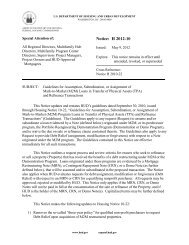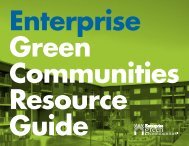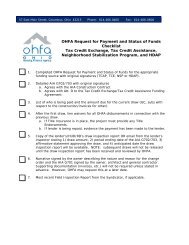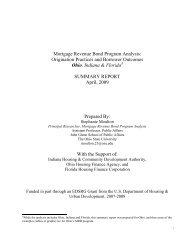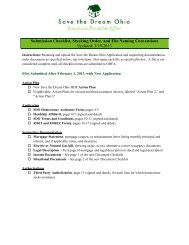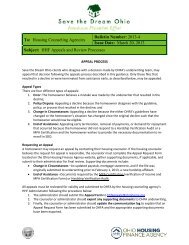lis 217 stemming the tide - LISC
lis 217 stemming the tide - LISC
lis 217 stemming the tide - LISC
- No tags were found...
Create successful ePaper yourself
Turn your PDF publications into a flip-book with our unique Google optimized e-Paper software.
endnotesCHAPTER 11 This Chapter is drawn, in part, from Emily P.Achtenberg, "Federally-Assisted Housing:Privatization vs. Preservation," in Housing:Foundation of a New Social Agenda, Rachel Brattet al., eds., Temple University Press (forthcoming).2 Not all Section 221(d)(3) and 236 projects havethis automatic prepayment right and <strong>the</strong> opportunityto convert to market use. If <strong>the</strong> project’soriginal sponsor was a nonprofit entity, or if <strong>the</strong>project has a federal rent supplement contractcombined with HUD mortgage insurance, <strong>the</strong>owner cannot prepay without HUD consent.Some gray areas exist, especially for projectsthat received special federal rehabilitation loansor grants in <strong>the</strong> late 1970s and 1980s underHUD's Flexible Subsidy program. Some of <strong>the</strong>seprojects require HUD's consent to prepay andsome do not, although all have use restrictionsthat limit rents through <strong>the</strong> original mortgageterm.3 For a more detailed discussion of <strong>the</strong>Enhanced Voucher program, see Chapter 2,"Federal Preservation Tools."4 The National Housing Trust maintains summaryprepayment data for each state (see Exhibit 1 inExhibits). See http://www.nhtinc.org/data.asp;click on "Summary Table of Prepayments" link.5 For a more detailed discussion of <strong>the</strong>se programs,see Chapter 2, "Federal PreservationTools."6 The OMHAR website includes a weekly statusreport of pipeline activity (Exhibit 2 in Exhibits).Click on "M2M Status Report" athttp://www.hud.gov/offices/omhar/readingrm/reports.cfm.7 The National Housing Trust also maintains optoutdata for each state (Exhibit 3 in Exhibits).See "Summary Table of Section 8 Opt Outs" linkat http://www.nhtinc.org/data.asp. (This datadoes not include terminated Section 8 units inexpiring use properties, where tenants receivedEnhanced Vouchers.)8 For a more detailed discussion of Mark-Up-To-Market and Mark-Up-To-Budget, see Chapter 2,"Federal Preservation Tools."9 To locate current legislation or pending bills,see http://thomas.loc.gov. Search by bill number(e.g., "HR 425").Or, search by word/ phrase (e.g."Preservation").CHAPTER 210 For <strong>the</strong> latest source documents, such as HUDNotices, handbooks, regulations, and policies,see http://hudclips.org.11 Including nonprofit controlled limited partnerships,which are also eligible for Mark-Up-to-Budget. Relative to Mark-Up-to-Budget, Mark-Up-to-Market has stricter eligibility rules butfewer requirements.12 Contracts executed on or before October 31,1997 are pre-MAHRA contracts. Contracts executedon or after November 1, 1997 are post-MAHRAcontracts.13 Seehttp://www.hud.gov/offices/hsg/mfh/exp/guide/s8guide.cfm. This website also provides Section 8Renewal Policy Guidebook updates and answersto Frequently Asked Questions (FAQs). See also"Renewal Options for Expiring Project-BasedSection 8 Contracts" (May 1, 2001 REV 2) byEmily P. Achtenberg, available atwww.<strong>lis</strong>cnet.org/resources/housing_preserv/.14 HUD’s Real Estate Assessment Center (REAC)monitors project conditions and regulatory compliance.15 Flexible Subsidy, no longer active, providedrehabilitation or operating loss loans and grantsin exchange for additional use restrictions.66 Endnotes 65



